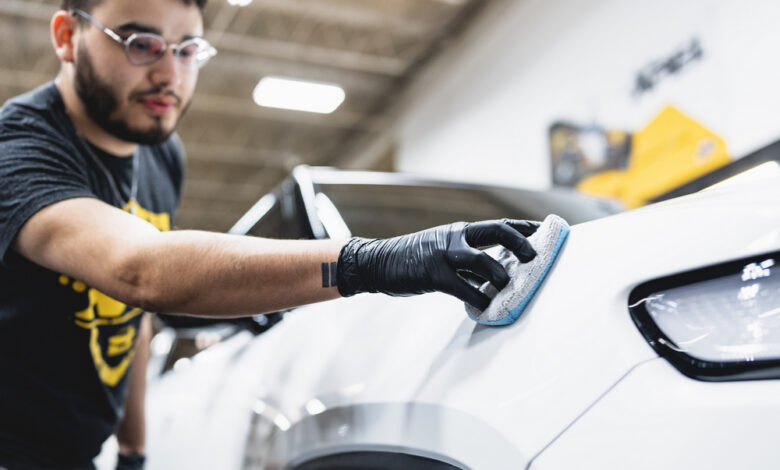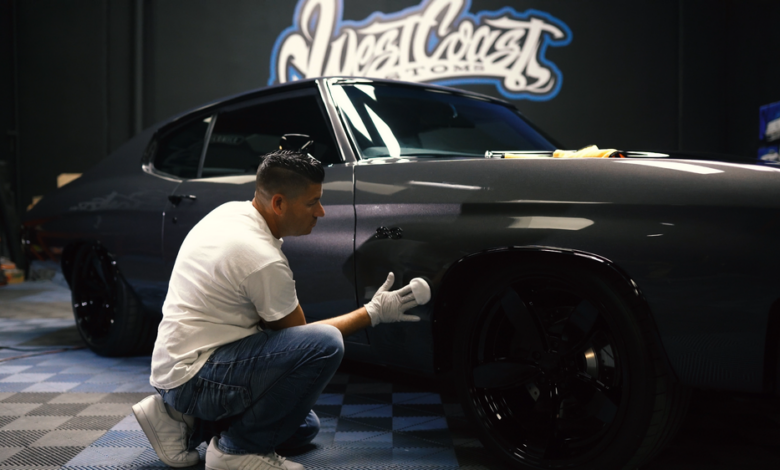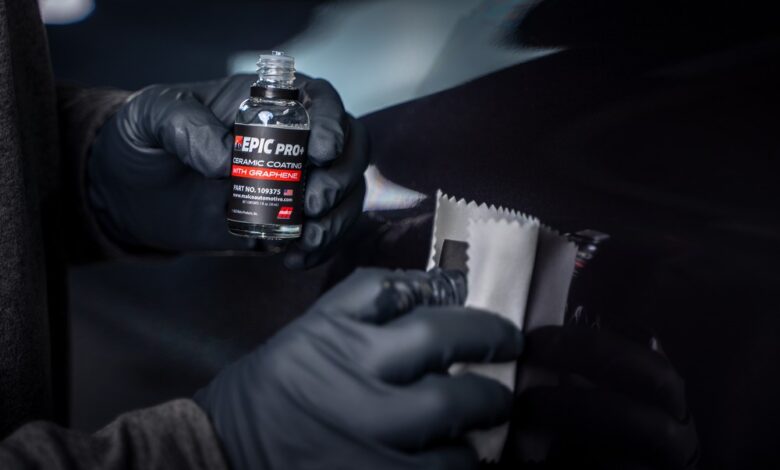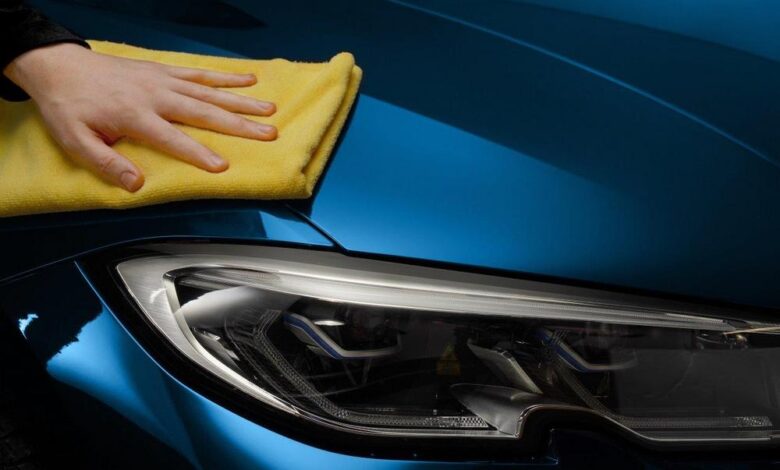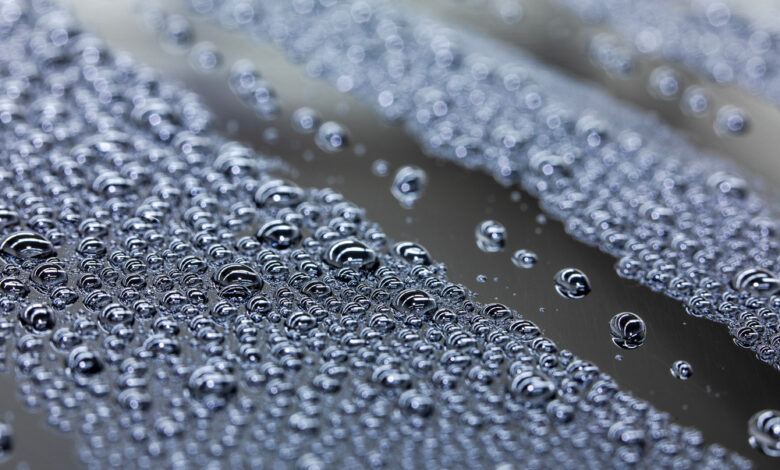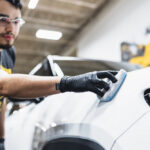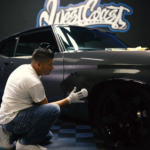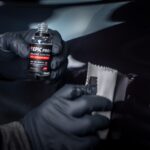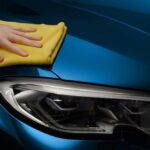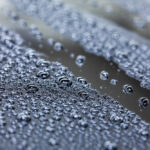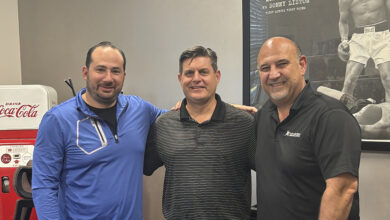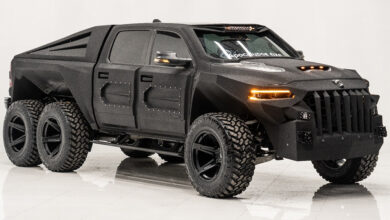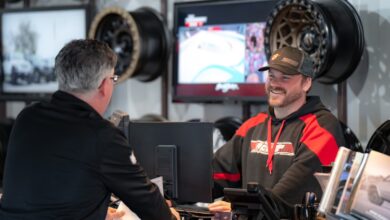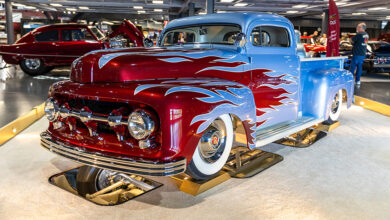This article originally appeared in the July 2023 issue of THE SHOP magazine.
Customers who view their accessorized vehicles as shining stars will want to keep them looking their best year after year. Enter ceramic coating, a long-term way to preserve and enhance paint finishes that can be offered as a professional service.
Attractive to everyone from race car owners to off-roaders to the Cars & Coffee crowd, the product maintains and highlights the sparkle of custom paint jobs and the sleek sheen of luxury rides while adding an extra layer of protection against the elements.
Whether pitching it to your wholesale or retail customers, there are some basics to know before you get started. Ceramic coating suppliers are happy to facilitate the introduction.
LAYER OF PROTECTION
To understand what ceramic coating can do for your customers, it may be best to start by defining what it can’t do.
Chris Hardy, director of sales, North America, for XPEL, has seen some shops liken the service to the benefits provided by paint protection film. The comparison is not accurate, he explains.
“The greatest tip I can offer is to not oversell it as something it is not,” he says. “When you sell coating the way it was intended, you end up with very happy clients. When you claim it will do as much as PPF for a fraction of the price, you are misleading the client, potentially leading to customer concerns.”
Ceramic coating will not protect against stone chips or stop scratches or swirl marks from occurring, he notes. But it does provide plenty of attractive benefits.
“It will make the vehicle’s paint depth and color pop like a freshly waxed car, only it lasts for years versus days,” he says, “and it will allow the vehicle to be cleaned far easier than without ceramic coating.”
Shops, of course, will want to set pricing that achieves an acceptable margin. But, even if the target market is affluent dealers or consumers, it’s important to not overcharge.
“Be reasonable with your price structure. Ceramic coatings are a luxury, but if you want to tap into the higher-end daily driver market, you can’t charge luxury prices or customers will be hesitant to make the purchase,” warns Jennifer Bowman, director of marketing for Malco Automotive Products.
Instead, she recommends creating package deals that include ceramic coating and related maintenance services.
“Use high-quality products, take the time to prep and install the coating well, and educate your customer on the benefits and performance of ceramic coating,” she says.
SETTING UP SHOP
There are a few steps to take before shops can begin delivering professional ceramic coating services to their clients.
“Many providers that offer a professional-grade coating such as XPEL require proper training in both coating and also paint correction,” says Hardy. “It is wise to have a dedicated area to do the application, as well as to allow the vehicle to remain in the same spot during the initial cure time.”
The job begins by prepping the vehicle, which includes, but is not limited to, washing, using an iron remover, clay-barring, possibly polishing and/or wet-sanding, washing it again and then using a specialized solvent right before application to ensure a better bond to the surface, Hardy outlines.
The process, he explains, can’t be rushed.
“You can use IR lamps to speed up the cure time by about 75%, but it still means the vehicle will need that floor time,” Hardy says. “Most of the better shops will require a vehicle to stay inside overnight to ensure the customer’s best experience with the coating.”
Tim Boxeth, senior marketing manager for 3M, says there are formulas that allow same-day delivery of ceramic coating if desired, and agrees that the work area should be closely regulated.
“It works best to have a clean environment and to apply at 60 degrees or above,” he says.
And, while 3M does not require technician training, “it is good to follow the instructions and practice some first.”
Ryan Jaworski, marketing manager for System X, also suggests gaining some experience before bringing the service to the public.
“To become a certified System X installation shop, the client must have a registered business and have sufficient knowledge of paint correction,” he says. “Certification with System X is free and does not require in-person training.”
Once comfortable with the product, Bowman agrees that a climate-controlled environment and correct surface preparation are the keys to success when installing the product.
“Ceramic coating is a solvent, and solvents will flash and cure at different rates based on the environment. To allow for appropriate open time during installation and for superior curing, we recommend that you install ceramic coatings indoors in a humidity-controlled environment (approximately 40-50% relative humidity) between 50 and 75 degrees,” she says.
That includes ensuring the vehicle surface itself is between 50 and 75 degrees as well, Bowman notes.
“Good airflow, a clean working environment and limited exposure to dust will ensure a smooth, glass-like finish of the installed coating,” she continues. “Once the coating is installed, the car must remain indoors for a minimum of 12 hours, and preferably 24 hours.”
When it comes to surface prep, Bowman explains that ceramic coating will magnify any imperfections in the paint that are not addressed before installation.
“A shop should have all the appropriate detailing tools to wash and perform paint correction and final-prep decontamination of the vehicle before ceramic installation,” she says. “Taking the time to complete a thorough paint correction of the car with a high-quality compound and finishing polish, then giving it a final wipedown with a ceramic prep wipe, will ensure a smooth, contaminant-free application surface.”
GIVE IT A TRY
Ceramic coating can greatly increase a customer’s satisfaction level when sold and maintained properly, says Hardy from XPEL, partly because it has a built-in automatic return process.
“Shops will see the clients more often than through other products such as window tint or PPF, as there is usually a yearly inspection required to maintain coating warranties,” he explains. “This touch point leads to a more friendly relationship, in turn leading to more revenue and more referrals.”
Malco’s Bowman also cautions against selling it as a “one-and-done service.”
“Yes, ceramic coating will extend the life of the vehicle’s exterior, but it must be maintained properly to maximize its performance and maintain its warranty,” she explains. “Proper maintenance of a ceramic-coated vehicle includes either regular hand-washing or using a touch-free car wash to clean the car using a high-quality ceramic-compatible soap. You should also protect the coated vehicle with a ceramic spray topper or refresher at least once every six months.”
If shops want to generate additional revenue from ceramic coating customers, offering a monthly ceramic maintenance package is an option.
“Then upsell additional services like engine cleaning, interior detailing, wheel cleaning and dressing the tires,” says Bowman.
Boxeth from 3M provides a list of ceramic coating selling points:
- Enrich/sustain high paint gloss and shine
- Seal-in and help maintain the “wet” look of a new polish
- Smooth surface finish you can feel
- Easier care and maintenance
- Slick finish allows dirt and containments to release with less effort
- Wash durability
- Keep cars cleaner longer
- Durable, long-lasting water beading effect
- Extreme hydrophobicity and water shedding
- Chemical resistance
- Protection against road salts, harsh cleaning agents, acid rain, tree sap, bird droppings, bug remains and environmental fallout
The results, he reports, are extremely positive.
“The feedback we get is that shops can be more profitable with it than they expected.”
The only thing holding back many potential ceramic coating customers is a lack of familiarity with the product and its benefits, says Jaworski—a challenge shops can easily overcome through supplier partnerships and simple online practices.
“System X runs large-scale marketing campaigns for consumer installation leads, which get automatically dispersed to our installer network free of charge. In some cases, installers can net more income from referred jobs than they have spent overall on product,” he reveals.
Lastly, to capture the attention of consumers searching for more information about ceramic coating on the internet, he recommends taking advantage of basic search engine optimization (SEO) methods, including keyword optimization in your shop’s Google business name.
SIDEBAR: THE PRODUCT & THE PROCESS
Strong demand is driving the ceramic coating market as consumers come to know and love the service for its dual benefits of enhanced appearance and added protection.
For aftermarket shops unfamiliar with ceramic coating, Michael Stoops, senior global product and training specialist for Meguiar’s, helps outline the product and the process.
For starters, he suggests viewing ceramic coatings as an advanced form of paint protection.
“Boiled down to their basic function, they do essentially what any old-school carnauba wax does—act as a sacrificial barrier to the paint on a vehicle,” Stoops says. “Ceramic coatings last far longer than traditional waxes and offer a much higher level of protection as well.”
Application is a bit more involved than with a traditional wax, however.
“It is critical that the paint be extremely clean prior to application of a coating. This means at the very least the vehicle needs to be washed, clayed and perhaps iron decontaminated as well,” he says.” Claying and iron decon are specialty processes designed to remove any bonded contaminants from the paint surface, making it feel very smooth to the touch, and allowing for waxes, sealants and especially ceramic coatings to better adhere to the paint and therefore perform to their maximum potential.”
Applications are often performed after the vehicle has gone through an extensive paint correction process so that swirl marks, fine scratches and other defects have been removed.
“This usually involves machine-applied compounds and polishes and then use of a specialty product to ensure that all traces of the compound and polish are removed,” Stoops explains. “Only then can a ceramic coating be properly installed.”
Then it’s time to cover the vehicle.
“The actual application of the coating can be a bit tedious,” he admits. “Usually, a specialty applicator pad is used, often wrapped in a unique type of microfiber cloth for proper distribution of the coating onto the paint. Application is done in a meticulous crosshatch pattern, covering only small areas of the vehicle at a time before wiping off or ‘leveling’ the excess product.”
In many cases, removing it at the right time is as important as, if not more so, than the initial application.
“Wipe it off too soon and you may wipe off almost all of the applied product,” he explains. “Wipe it off too late and the product may have already started to cure, meaning high spots will be left behind. These high spots must then be removed with a machine compounding or polishing process, and the coating application must be redone.”
Timing specifics can vary from coating to coating, he notes, and also change with temperature and humidity, meaning there’s no substitute for knowledge and experience.
